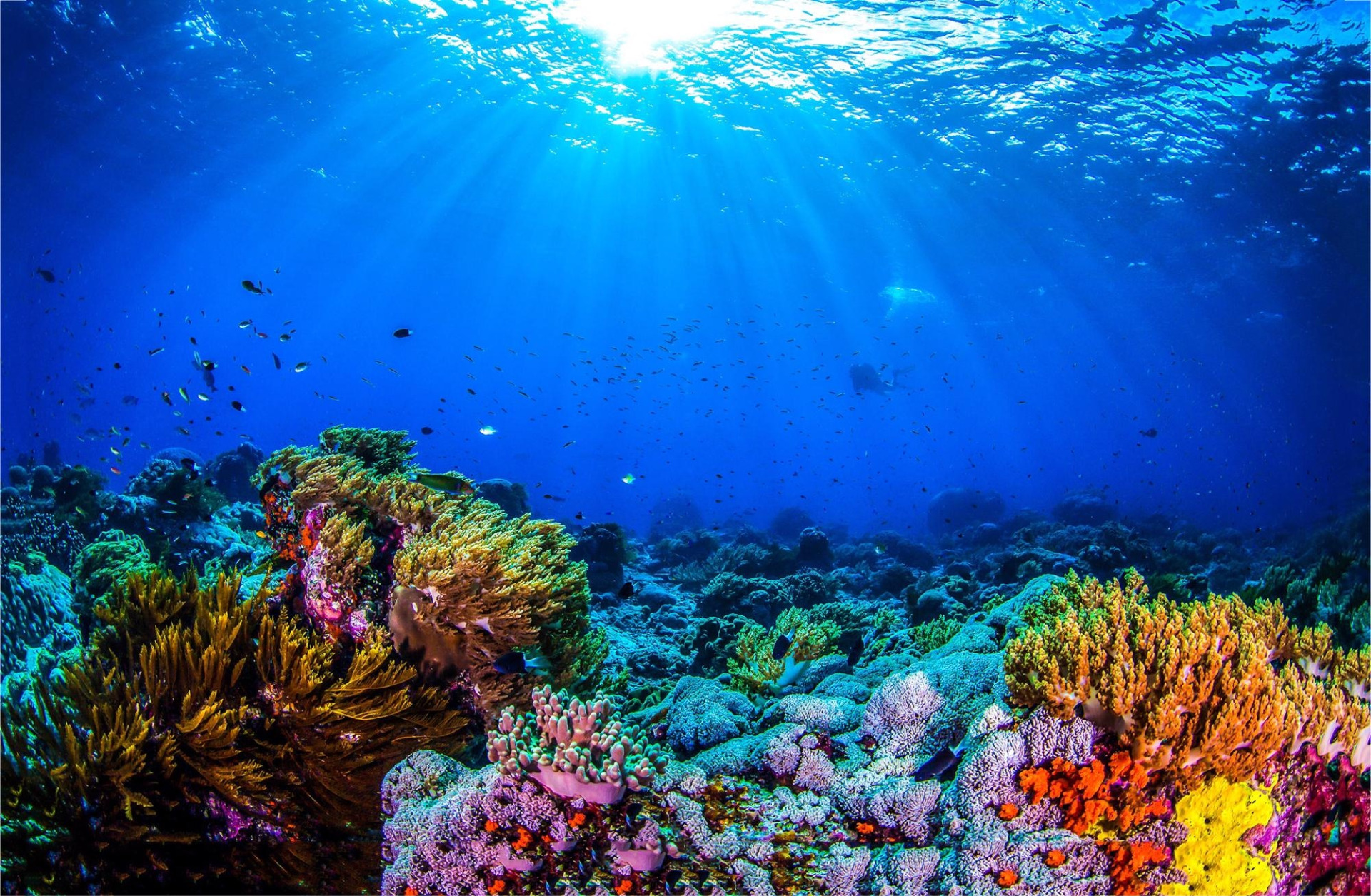
PHOTIC ZONE
In the photic zone,also known as sunlight zone or the epipelagic, the photosynthesis rate exceeds the respiration rate. This is due to the abundant solar energy which is used as a food source for primary producers such as phytoplankton. These phytoplankton grow extremely quickly because of sunlight's heavy influence, enabling it to be produced at a fast rat.
Ninety percent of marine life lives in the photic zone. This includes phytoplankton (plants), including dinoflagellates, diatoms, cyanobacteria, coccolithophorids, and cryptomonads. It also includes zooplankton, the consumers in the photic zone. There are carnivorous meat eaters and herbivorous plant eaters. Next, copepods are the small crustaceans distributed everywhere in the photic zone, and are actually the biggest group of animals on the planet. Finally, there are nekton (animals that can propel themselves, like fish, squids, and crabs), which are the largest and the most obvious animals in the photic zone, but their quantity is the smallest among all the groups
CORAL REEFS
A coral reef is an underwater ecosystem characterized by reef-building corals. They are part of the photic zone and are found in waters less than 50 metres deep. When alive, corals are colonies of small animals embedded in calcium carbonate shells. Coral heads consist of accumulations of individual animals called polyps, arranged in diverse shapes. Polyps are usually tiny, but they can range in size from a pinhead to 12 inches across. Aside from corals , sponges play a role in building reefs and can sometimes even build one without any corals although the structure would not be as recognizible.

